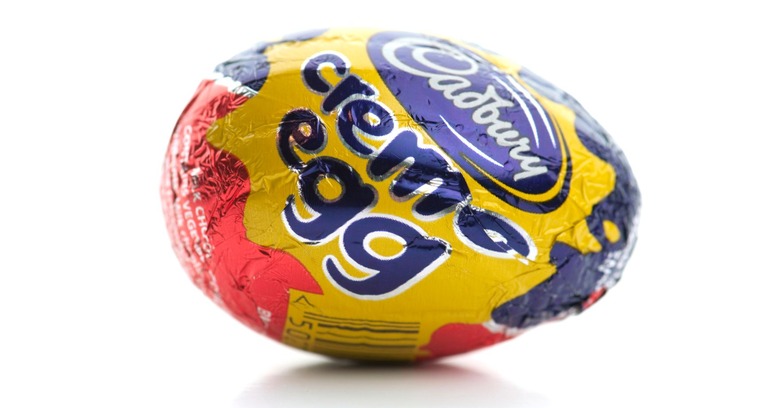6 Things You Didn't Know About Cadbury Creme Eggs
Along with Peeps and chocolate bunnies, Cadbury Creme Eggs are one of the definitive Easter treats (with or without pizza). These sweet, dense chocolate eggs are filled with a thick, sugary "fondant" that resembles the inside of an egg, and every Easter season they're eaten by the millions. But even if you're a die-hard Creme Egg fan who buys them by the dozen every spring, we bet that there's a lot you didn't know about this teeth-tinglingly sweet treat.
They've Been Around Since 1923
The Cadbury Brothers first invented the filled egg in 1923, and they've been available (more or less) in their current form since 1963. First sold as Fry's Creme Eggs, they've been called Cadbury Creme Eggs since 1971.
They're Made Via an Interesting Method
To make the eggs, chocolate shells are made as two identical lengthwise halves, which are then filled with white fondant (actually inverted sugar syrup) and topped with small amount of yellow. The two halves are then fused together.
The Commercial Is One of TV's Longest-Running
If you've been watching your fair share of television lately, you've probably spotted this commercial back on the airwaves for another year. It's actually one of the longest-running commercials in television history, going strong since 1994!
They've Shrunk
As none other than B.J. Novak pointed out on Conan O'Brien's show in 2007, Cadbury Eggs shrunk from 39 grams to 34 grams in early 2006. They're still a challenge for lots of people (especially adults) to finish, though, because of their overwhelming sweetness.
The Chocolate Formula Changed, and People Weren't Happy
In 2015, Cadbury announced that all British Creme Eggs would no longer contain its prized Dairy Milk chocolate, and instead would use "standard cocoa mix chocolate" as a cost-saving measure. Furious Britons boycotted the product, resulting in a $12 million loss of sales in the UK.
They're a Lot More Popular in the UK than in the US
Cadbury Creme Eggs are the best-selling confectionery between New Year's Day and Easter in the UK. On average, more than 200 million are sold during this time — about three for each resident!
